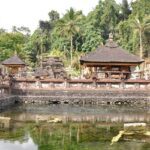Brazil’s past shows up in small corners and grand buildings. These historical places in Brazil are built with stone, faith, and force. In Salvador, carved wood darkened by time still lines church walls. Inland towns like Ouro Preto and Tiradentes carry traces of gold, rebellion, and devotion. They are part of the country’s long road through empire, slavery, independence, and growth. You’ll find them in hilltop chapels, fortress ruins, tiled corridors, and town squares that haven’t changed shape in two hundred years.
Top Historical Places In Brazil
These historical places in Brazil are scattered across cities and coastal hills. They hold stories that shaped the country across centuries of change.
1. Christ The Redeemer (Rio De Janeiro)

Photo: Donatas Dabravolskas / Wikimedia Commons
Christ the Redeemer was built in the 1920s, when Brazil had left its empire behind, and donations came in mostly from Catholics across the country. Heitor da Silva Costa planned the structure. The statue was built in France by Paul Landowski, sent in pieces, then raised here in Rio. Thirty metres high, concrete inside and soapstone outside. The arms stretch twenty-eight metres across. You can get there by cog train, the ride goes through Tijuca Forest. At the top, the view is wide of beaches, buildings, hills, all packed into a single sweep.
How To reach: Take a cog train from Cosme Velho or a van from Largo do Machado
Cost: R$90 per adult
Timings: Daily, 8 AM – 6 PM
Nearby Attractions: Sugarloaf Mountain, Copacabana Beach, Lapa Arches
2. Ouro Preto (Minas Gerais)
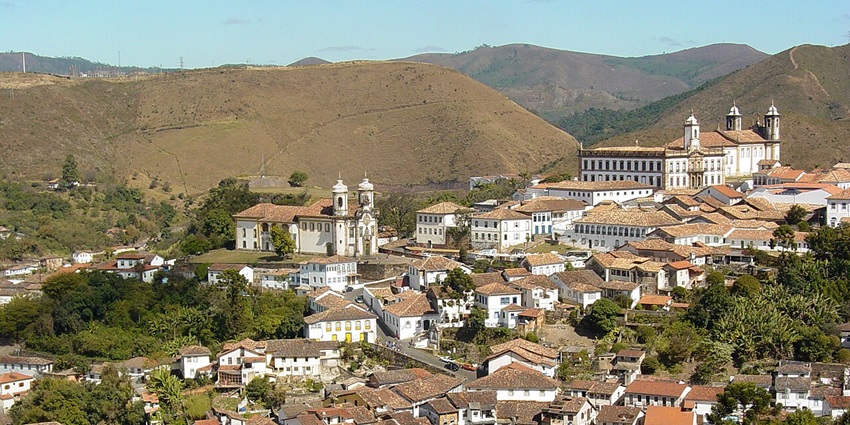
Photo: Adam Jones Adam63 / Wikimedia Commons
The hills around Ouro Preto are steep, and the streets are still paved with rough stone, among all the historical places in Brazil. It was once the heart of Brazil’s gold rush. By the 1700s, this town was the richest in the Americas. Enslaved Africans were forced to dig for gold and, with their labour, built the churches, the bridges, and the homes. Walk into the Church of São Francisco de Assis, and you’ll see carvings by Aleijadinho. Walk past rows of whitewashed houses with red tile roofs and painted doors. Ouro Preto still holds the weight of its past.
How To reach: 2-hour drive from Belo Horizonte via BR-356
Cost: R$5–R$20 / ₹
Timings: 24*7
Nearby Attractions: Mariana, Casa dos Contos, Church of São Francisco de Assis
3. Pelourinho (Salvador)
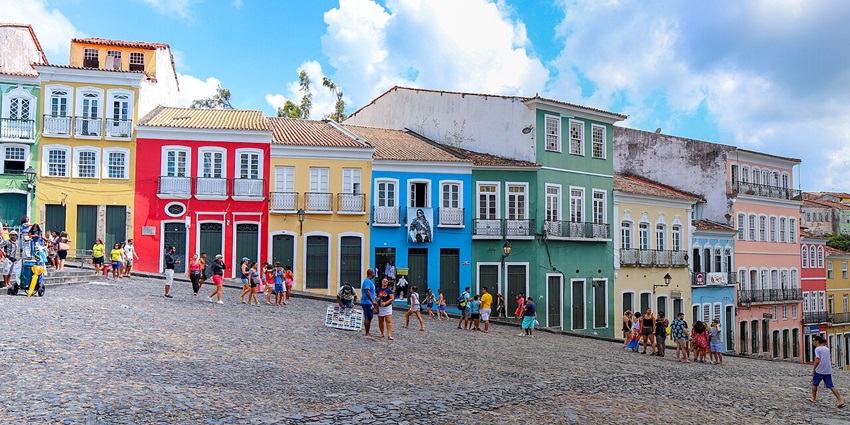
Photo: Paul R. Burley / Wikimedia Commons
Pelourinho is one of the historical places in Brazil with tight streets, uneven stone paths, and colonial buildings packed close together. This was the centre of power during Portuguese rule in Bahia. Government buildings and churches were built here. The Church of São Francisco is the most visited, with heavy wooden doors and a dark gold interior that hasn’t changed much in centuries. The squares, Largo do Pelourinho and Terreiro de Jesus, stay active with drummers, local artists, and tour groups.
How To reach: 35-minute drive from Salvador International Airport
Cost: R$5–R$15 /
Timings: 9 AM – 5 PM
Nearby Attractions: Mercado Modelo, Elevador Lacerda, São Francisco Church
4. São Miguel Das Missões (Rio Grande Do Sul)
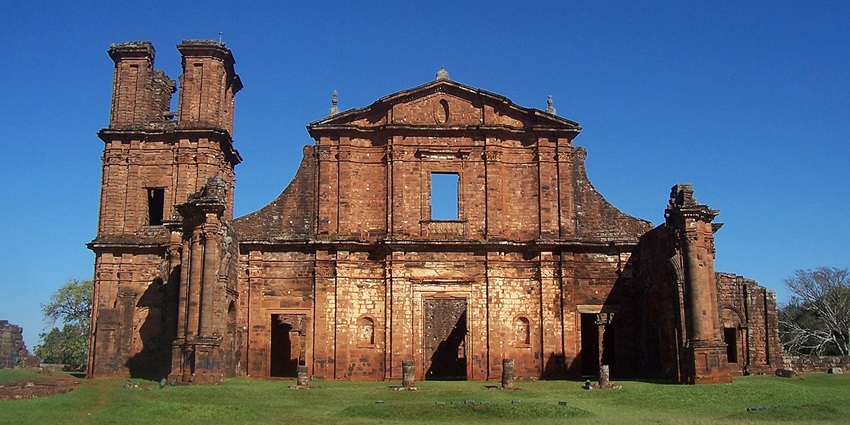
Photo: Leandro Kibisz / Wikimedia Commons
São Miguel was one of the developed among other historical places in Brazil, with a church, housing, workshops, and schools. The Jesuits were expelled, and the site fell into ruin. What remains are quiet but solid arched doorways, partial walls, and stone outlines of what was once a planned town. The museum beside the ruins holds religious sculptures and carved pieces found during excavations. A sound and light show is held in the evening, projecting images and narration across the stone walls.
How To reach: Fly to Santo Ângelo, then drive 45 minutes
Cost: R$10
Timings: 9 AM – 12 PM and 2 PM – 5 PM
Nearby Attractions: Jesuit Museum, Light and Sound Show, Santo Ângelo Cathedral
5. Imperial Museum (Petrópolis)
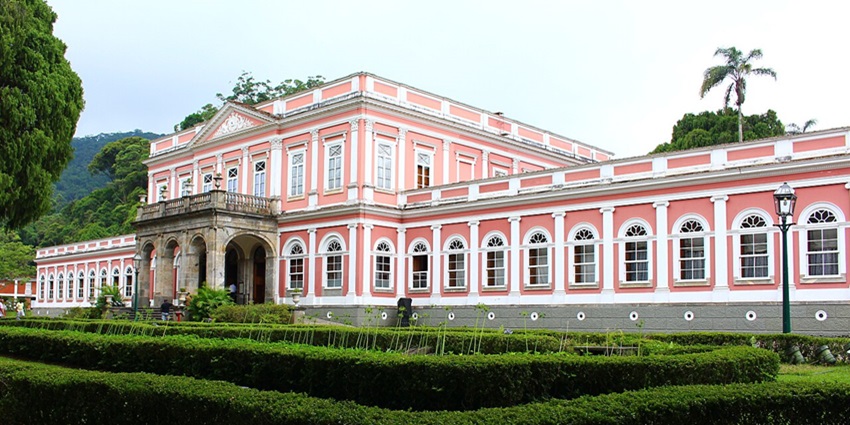
Photo: Filipo Tardim / Wikimedia Commons
The building was once the summer palace of Emperor Dom Pedro II, built in the mid-1800s when Petrópolis became a retreat for Brazil’s royal family. It still looks like a place meant for quiet and formality of pale pink walls, wide gardens, and windows framed with white trim. Inside, original furniture, paintings, official robes, and imperial crowns are kept in glass cases. The floors are made of dark wood. Each room shows a different part of royal life, family portraits, handwritten letters, military uniforms, and banquet settings.
How To reach: 1.5-hour drive from Rio de Janeiro via BR-040
Cost: R$10 for adults
Timings: 11 AM – 6 PM (Tuesday – Saturday)
Nearby Attractions: Crystal Palace, St. Peter of Alcantara Cathedral, Bohemia Brewery
6. Tiradentes (Minas Gerais)
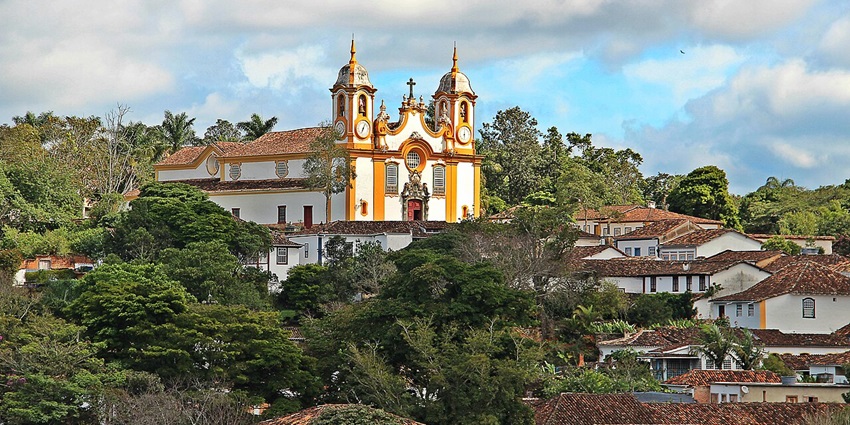
Photo: Marinelson Almeida – Travelling through Brazil / Wikimedia Commons
Tiradentes feels smaller than other colonial towns that were once part of the gold trail that ran through Minas Gerais. Its name honours Joaquim José da Silva Xavier, better known as Tiradentes. The town still has no traffic lights, and many streets are too narrow for cars. Most of the buildings are white with wooden doors and colourful window frames. The Santo Antônio Church, finished in the 18th century, stands on a hill above the town and holds one of the oldest pipe organs in Latin America. One of the historical places in Brazil.
How To reach: 3.5-hour drive from Belo Horizonte via BR-040 and BR-265
Cost: R$3–R$15 /
Timings: 9 AM – 5 PM
Nearby Attractions: Largo das Forras, São José Fountain, Museum of Padre Toledo
7. São Francisco Church And Convent (Salvador)
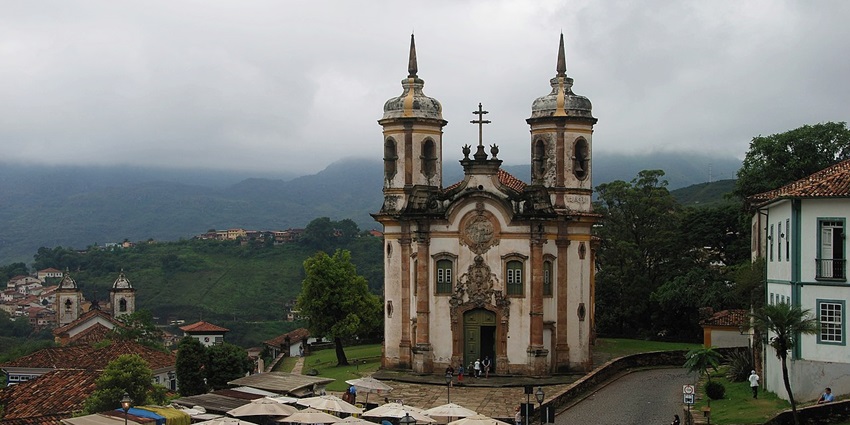
Photo: Alvesgaspar / Wikimedia Commons
The São Francisco Church stands in the middle of Salvador’s old centre, just a few steps from busy squares. Construction began in the early 1700s, and the exterior is heavy with carved stone. Almost every inch of the interior is covered in gold leaf. The walls are lined with wooden panels, carved in high relief, and the ceilings are painted with religious scenes framed in baroque detail. Out of all the historical places in Brazil, this one shows how deeply art, religion, and wealth were tied together during the height of Portuguese rule in the northeast.
How To reach: Within Pelourinho; walkable from nearby areas
Cost: R$5
Timings: 9 AM – 5 PM
NearbyAattractions: Terreiro de Jesus, Catedral Basílica, Casa do Benin
8. Paraty Historic Centre (Rio De Janeiro State)
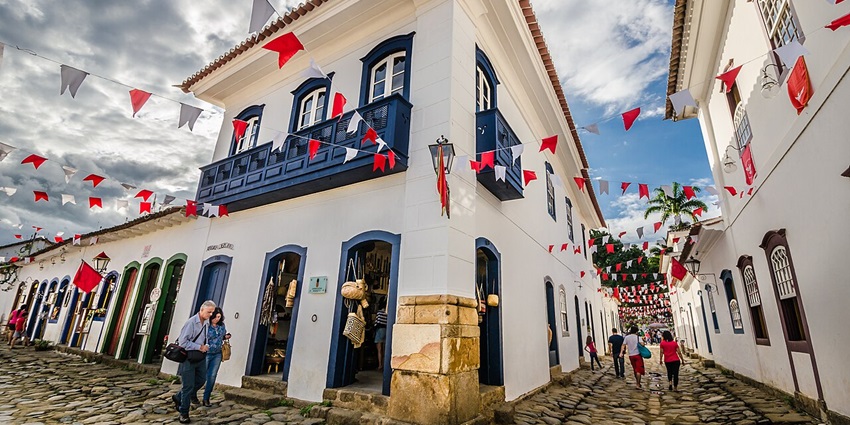
Photo: Alfredo J G A Borba / Wikimedia Commons
Paraty’s historic centre sits along the coast, surrounded by calm sea and forested hills. The streets are uneven, laid with large stones that shine after rain. Its importance faded after the gold trail shifted, but the architecture stayed untouched. Churches with whitewashed walls and simple facades face quiet squares. The houses are close together, their doors painted in deep greens, blues, or reds. Some still have original wooden beams, worn down by time and salt air.
How To reach: 4-hour drive from Rio or São Paulo
Cost: R$5–R$10
Timings: 9 AM – 6 PM
Nearby Attractions: Jabaquara Beach, Gold Trail, Saco do Mamanguá
9. Fortaleza De Santa Cruz Da Barra (Niterói)
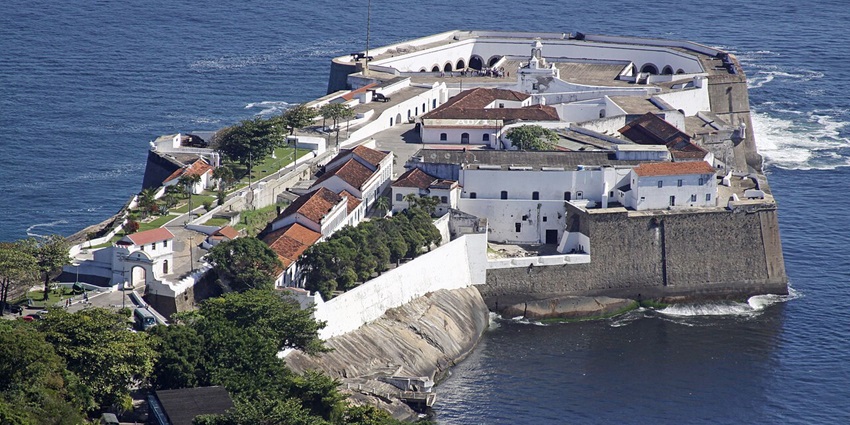
Photo: Halley Pacheco de Oliveira / Wikimedia Commons
Fortaleza de Santa Cruz guarded the entrance to Rio de Janeiro against French, Dutch, and later foreign warships. Its walls are thick, built from stone and lime, and the cannons still face the water, lined along the upper ramparts. The structure includes a chapel, soldiers’ quarters, and lookout points with full bay view. The fort is still under military control, so entry is only possible through official visits. Among historical places in Brazil, this one offers more than just a preserved structure.
How To reach: Ferry from Rio to Niterói, then taxi or car
Cost: R$10
Timings: 10 AM – 5 PM (Tuesday to Sunday)
Nearby Attractions: MAC Niterói, Icaraí Beach, Caminho Niemeyer
10. Cathedral Of Brasília (Brasília)
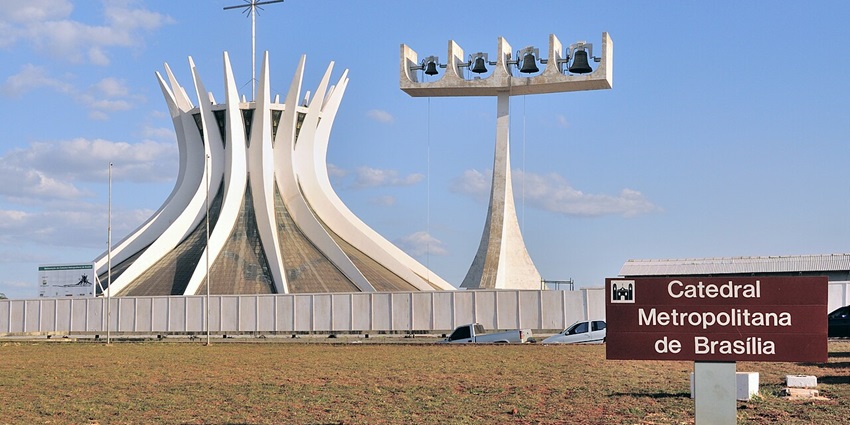
Photo: Cayambe / Wikimedia Commons
The Cathedral of Brasília is called the Cathedral of Our Lady of Aparecida. Sixteen curved concrete columns rise from the ground and lean inward, forming a circular opening to the sky. Glass walls close the space, filled with stained glass in blue, green, and white by artist Marianne Peretti. Natural light fills the entire interior. Three angel sculptures hang above the nave, suspended by thin steel cables. It is still used for services and is open to the public during the day. Among historical places in Brazil, this cathedral marks a shift away from colonial architecture.
How To reach: Accessible via Brasília metro or local taxi
Timings: 8 AM – 6 PM
Nearby Attractions: National Museum, Esplanada dos Ministérios, Itamaraty Palace
11. Recife Antigo (Recife)
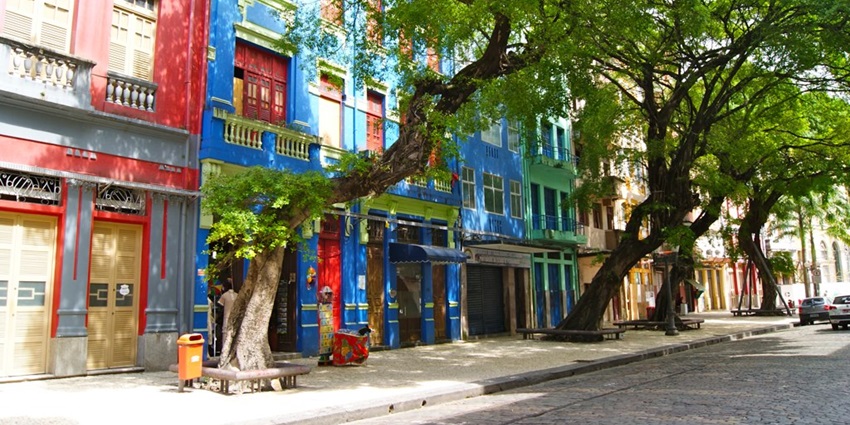
Photo: Raul DS / Wikimedia Commons
The neighbourhood runs along the old port, where ships once arrived with goods and people from across the Atlantic. The buildings are tall and narrow, with peeling paint, heavy doors, and long windows. They hold small museums, bars, and craft shops. The Kahal Zur Israel Synagogue sits on a side street. It’s the oldest known synagogue in the Americas. Around the corner, the Paço do Frevo celebrates local music and street performances. The roads are rough and tight, so walking is the only way to move around. On Sundays, there’s usually live music and food stalls.
How To reach: 25-minute drive from Recife International Airport
Cost: R$5–R$15
Timings: 24*7; museums open 9 AM – 5 PM
Nearby Attractions: Embaixada dos Bonecos, Paço do Frevo, Kahal Zur Israel Synagogue
12. Theatro Municipal (São Paulo)
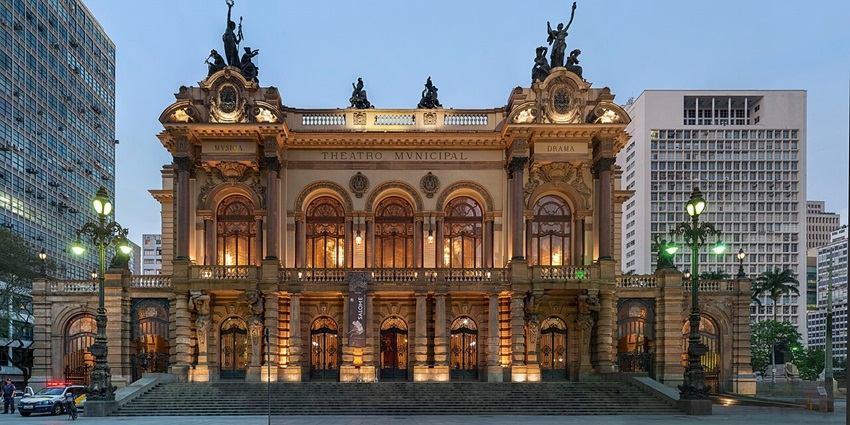
Photo: Wilfredor / Wikimedia Commons
The Theatro Municipal was built to match the grand opera houses of Europe. At the time, São Paulo was growing fast from the coffee trade, and the theatre was meant to show that the city belonged among the world’s cultural capitals. The design mixes baroque and Art Nouveau styles. Inside, the staircases are lined with Italian marble, and the chandeliers are heavy with glass. The stage has hosted some of the most important names in opera, dance, and theatre, including early performances by artists who later shaped Brazil’s Modern Art Week in 1922.
How To reach: Near Anhangabaú Metro Station
Cost: R$20
Timings: 10 AM – 5 PM (Tuesday to Saturday)
Nearby Attractions: Praça Ramos, Viaduto do Chá, Municipal Library
From colonial streets paved in stone to hilltop churches and imperial palaces, the historical places in Brazil offer real, physical spaces where the past is still present. Each site holds something that shaped the country, whether through faith, conflict, art, or empire. They are lived in, walked through, and opened to anyone willing to explore beyond the usual routes. Explore more such packages offered by TripXL, for an unforgettable experience.
Cover Photo: Stefano Vigorelli / Wikimedia Commons


 WhatsApp
WhatsApp
 Twitter
Twitter



